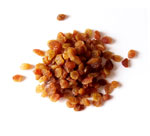A battle builds over breakfast
Posted by: admin on: November 18, 2011
Under the threat of federal action, everything about kids’ food, from cereal sugar levels to mascots to TV ads, is under scrutiny
-Team@CMHF
- Lucky Leprechaun isn’t looking so lucky these days, for almost 50 years, the cartoon imp has helped General Mills peddle its Lucky Charms cereal.
- His trademark phrase — “They’re magically delicious” — has been a milk-pouring mantra for generations of American kids.
- But worries about the nation’s child obesity epidemic could silence Lucky and other cereal cartoon mascots.
- A growing public backlash against marketing sugar-heavy food to children has the federal government putting extraordinary new pressure on the nation’s cereal makers and other food companies. They may soon have little choice but to make sure products meet certain nutritional standards — or stop marketing them to children younger than 12.
- The guidelines would be one of the most important ways for the food industry to improve children’s health, said Mary Story, a University of Minnesota public health professor and expert on child and adolescent nutrition.
- But food makers say the government is trying to strong-arm them into changing products in ways they consider unrealistic and unwarranted. If they don’t comply, the companies say, they could be compelled to scrap
- General Mills spokesman Tom Forsythe said the guidelines would mean “a virtual ban on advertising to kids under 12 when fully implemented. … They are unworkable.”
- Amid the growing pressure, General Mills and the rest of the multibillion dollar industry have gone to work to cut down on sugar and salt in products that appeal most to children.
- The companies point to sugar reductions of 20 percent or more in Lucky Charms and other breakfast favorites as evidence that, even without federal intervention, they are getting results.
- Public health advocates have praised those efforts but also contend that they haven’t made a big enough impact.
- The industry’s definition of healthy food, they say, is too lenient and puts business interests before kids’ health.
Customers for life
- A huge and important market is at stake for food makers.
- A conservative estimate of food and beverage sales to kids and teens registered $10 billion last year, a number expected to rise 40 percent by 2015, according to Packaged Facts, a research group.
- The 2- to 12-year-old age group makes up nearly 15 percent of the U.S. population — and the most influential age group for marketers, Packaged Facts concludes in a May research report.
- Lifelong dietary habits are established during this 10-year age span, and brand loyalty begins, the report said.
- Advertisers have known this for decades. Fifty years ago, General Mills sponsored the classic “Rocky & Bullwinkle” cartoon show, making it a showcase for its cereal.
- Parents, of course, have long dealt with the nag effect fostered by TV advertising.
- Olson has only basic cable television, which reduces her children’s exposure to kid programming but on Saturday morning, TV is as it’s always been: lots of kids’ shows with lots of kid-oriented ads. And the ads work their magic.
- It’s literally a barrage from my kids when they are watching these shows and demand I want this, I want that, Olson said adding that they will see these ads and call out for strange cereals we never buy.
- She does buy Cocoa Puffs, Froot Loops and a few other kid favorites but limits her kids to one serving per day.
- They are a vehicle for my children to consume milk and she doesn’t count on “sugar” cereal, as she put it, for anything else nutrition-wise.
- Worries about the effects of marketing on children have led to restrictions on TV advertising since the 1970s.
- The subject got new life in the past five years as concern grew over obesity.
- The percentage of U.S. children ages 6 to 11 who are obese nearly tripled between 1980 and 2008, and a similar pattern played out among teenagers.
- In 2008, more than one-third of children and adolescents were overweight or obese, according to the Centers for Disease Control and Prevention.
- But do ads make kids fat? The Grocery Manufacturers Association, a trade group for makers of packaged food, says no, pointing to a landmark 2005 study by the Institute of Medicine that failed to show food advertising caused childhood obesity.
For further reading log on to: http://www.startribune.com/business/133301703.html
Search
- drchasrani: Difficult to get such a data, authenticated at that. Try Times of India online library
- rakesh pore: hi, where can i get genuine information about "10 most common drugs sold in india?" i want it for a local project
- nilesh dutta: sir, Plz give detail about MBA Sports Management Thanks and Regards


Leave a Reply